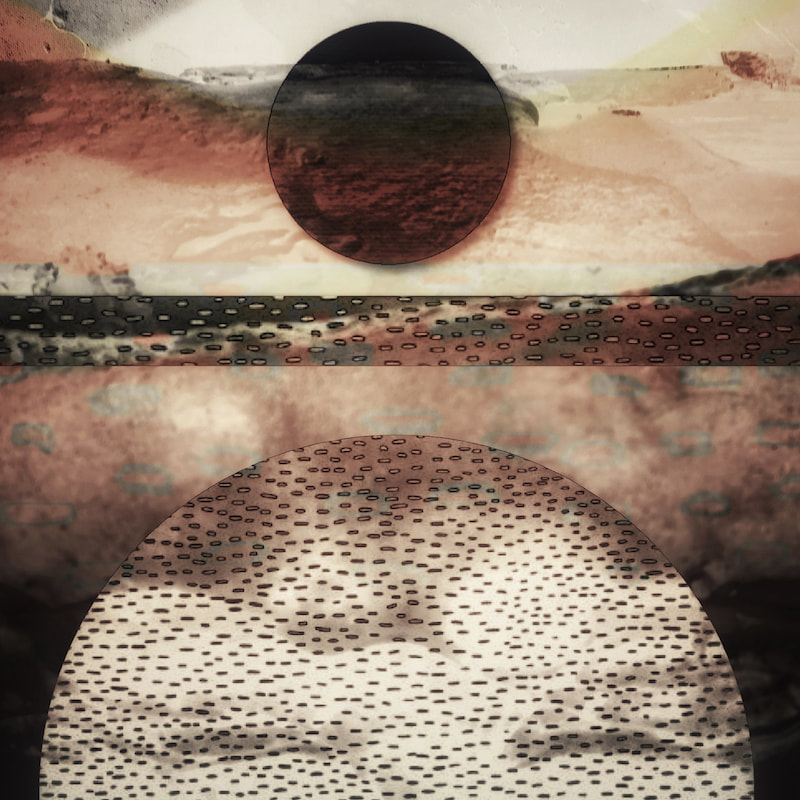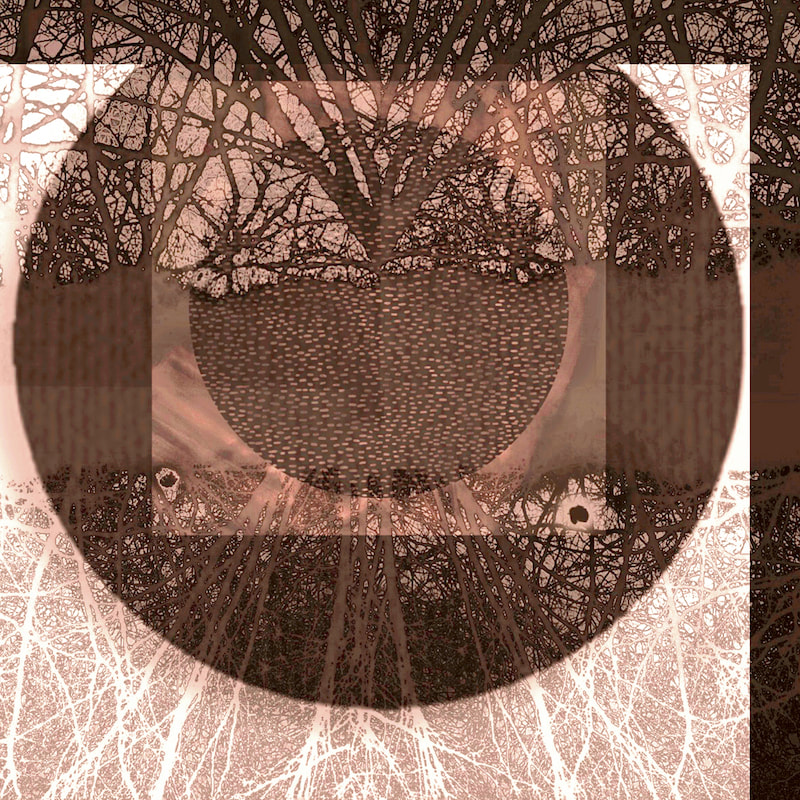Sara Silks
Warming Effects
Sara Silks
Warming Effects 1
Pigment Print on Unryu Washi, handwaxed ©2019
Warming Effects 1
Pigment Print on Unryu Washi, handwaxed ©2019
Warming Effects
|
Since its invention in the 19th century, Photography arose as the medium of choice used to record change in all aspects of human life. Enabled by an inherent versatility, immediacy and constantly increasing availability, photography has allowed us to build an accurate timeline of events that defined our evolution and progress. Alongside its record-keeping properties, Photography has allowed us to engage in another primal need, that of creative expression. Arguably one of the driving forces behind the very creation of the medium itself. This need was previously expressed by other, much older disciplines such as painting and other craft-based mediums, that have enabled artists to express their emotional responses to an ever-changing and evolving world. This evolution, of course, has multiple sides to it - both positive and negative, depending on one’s point of view. And whilst our celebrated technological achievements have brought undeniable benefits to us as a species, their negative impact to the environment and the planet as a whole is an inescapable fact. Sara Silk’s meticulously crafted Warming Effects series exists in this space between recording the human impact to the environment and expressing a more personal connection to a landscape that shows evident signs of suffering from, what she poignantly calls, our actions, interactions and reactions. By creating a series of photographic works that combine different techniques and masterful craftsmanship, Silk has produced a set of images that act as both record and warning for generations to come. In this Q&A with the artist, we are given insight into the artists’ personal connection with the climate-related changes affecting the Ozark landscapes, in the vast mountain ranges of central USA, and the creative process behind a truly exciting body of work. |
Sara Silks
Warming Effects 3
Pigment Print on Unryu Washi, handwaxed ©2019
Warming Effects 3
Pigment Print on Unryu Washi, handwaxed ©2019
Sara Silks
Warming Effects 4
Pigment Print on Unryu Washi, handwaxed ©2019
Warming Effects 4
Pigment Print on Unryu Washi, handwaxed ©2019
You make reference to the woods of the Ozarks as a place of personal significance for you since childhood. How did your connection with this location influence the making of the works in the series?
I often describe my childhood as one of renegade youth, where little or no supervision during the days of the Ozark summers led to investigations, discovery, and a spirited “oneness” with the land and waters around me. I enjoyed endless hours of exploring and quiet observation, often alone from the age of eight onward, and an awareness of this “oneness” has seeped into my very being, almost as part of my DNA. Because of my sensitivities, the subtle and not-so-subtle climate changes in the Midwest grew increasingly worrisome, and I found my work reflecting my feelings about what was happening. This and other projects began and continue based on my concerns about climate, ecosystems, and the environment. The combination of geometric shapes with your own photographs of weather events results in rather striking visual compositions. Can you give us some insight on the decision process behind the design of the composed images?Most of the work that I do begins like a sketch of something. Warming Effects 1 began with an image of the large ice that formed on my deck, and then I applied spherical elements to represent the globe. I then added a vertical rectangle which I thought of as a metaphor for a ruler measuring the increasing tides. It took off from there as I developed a folder of elements and images to work with, and as the combinations continued to express my feelings and fascinate me. |
Sara Silks
Warming Effects 11
Pigment Print on Unryu Washi, handwaxed ©2019
Warming Effects 11
Pigment Print on Unryu Washi, handwaxed ©2019
Your work is known for combining different techniques and crafts, alongside your photography. Can you describe the creative process for making the images for Warming Effects in the studio?
I have always been interested in how the fabric of layers can add dimension to both language and visual art, and that interest inserts itself into my work subconsciously. I also believe that my many years of study in drawing and printmaking influence the way I may approach a project or artwork. I have many tools in my media toolbox to draw from, and in this project, I used my love of geometry, design, and collage to create each image. When the images began to assemble themselves as a strong unit of work, I printed each one on handmade Unryu washi paper, and then applied a time-intensive cold wax process to the surface, for depth, beauty, and preservation. I have used this same technique since my Natsukashii series of landscapes…it is a thread of process that will continue, as it is a way to make the transient more permanent. |
Sara Silks
Warming Effects 12
Pigment Print on Unryu Washi, handwaxed ©2019
Warming Effects 12
Pigment Print on Unryu Washi, handwaxed ©2019
Sara Silks
Warming Effects 19
Pigment Print on Unryu Washi, handwaxed ©2019
Warming Effects 19
Pigment Print on Unryu Washi, handwaxed ©2019
What are the main influences in your work - do you draw inspiration from other artists, either classical or contemporary?As a child, I looked at a great deal of Oriental artwork from a renowned collection in our art gallery. I was thrilled to learn that the flat planes, use of space and color to create depth, and the simplicity of Oriental art affected the Impressionists and others in that time period. I love looking at the beautiful surfaces of early photographs that are platinum palladium and silver gelatin, and I love and collect artists from mid-century to contemporary who use alternative methods in their work and express great ideas with that. You succinctly describe the images as a record of our actions, interactions, and inactions. Is there also a side of the work that acts as a climate change warning for generations to come? Have you continued to observe the same extreme weather phenomena in the Midwest since you started working on the series back in 2019?I think that this particular project is more of a record of weather events as they unfolded and changed due to our planet’s warming. My newer work, Prairiefire, was born from a real fear of being on a global precipice and in imminent danger because of our intense drought and fire alerts in the U.S. So, in that sense, Warming Effects is an expression of how the world seems to be changing, while my work since has included more images that imply warning and danger for the future. I believe that the extreme weather phenomena here in the Midwest has only accelerated, and I imagine that future work will be driven by this. |
Sara Silks
Warming Effects 20
Pigment Print on Unryu Washi, handwaxed ©2019
Warming Effects 20
Pigment Print on Unryu Washi, handwaxed ©2019
Sara Silks
Warming Effects 21
Pigment Print on Unryu Washi, handwaxed ©2019
Warming Effects 21
Pigment Print on Unryu Washi, handwaxed ©2019
Bio
Sara Silks is a fine art photographer known internationally for her work in alternative processes. She received her BA in both Visual Arts and Art History, and MA in Art History with Honors.
Her graduate work with John Talleur for printmaking, and her studies with Christopher James, Christina Z. Anderson, and Elizabeth Opalenik have inspired her continued work with alternative and historic photographic processes.
Silks exhibits in the U.S. as well as internationally in museums and juried gallery shows, and had her first solo show in New York City at the Soho Photo Gallery in October of 2017. She was a featured artist in ScotiaBank’s Contact Photo Festival in Toronto in 2019 and 2020, with Lonsdale Gallery.
Silks has been a finalist in Photolucida’s Critical Mass four times, and was the international winner in two categories of the Julia Margaret Cameron Awards, 2017, resulting in work shown in Barcelona.
Her work has appeared in numerous museums, galleries, publications, and exhibitions throughout the U.S and internationally, and is also held in private collections.
www.sarasilks.com
Her graduate work with John Talleur for printmaking, and her studies with Christopher James, Christina Z. Anderson, and Elizabeth Opalenik have inspired her continued work with alternative and historic photographic processes.
Silks exhibits in the U.S. as well as internationally in museums and juried gallery shows, and had her first solo show in New York City at the Soho Photo Gallery in October of 2017. She was a featured artist in ScotiaBank’s Contact Photo Festival in Toronto in 2019 and 2020, with Lonsdale Gallery.
Silks has been a finalist in Photolucida’s Critical Mass four times, and was the international winner in two categories of the Julia Margaret Cameron Awards, 2017, resulting in work shown in Barcelona.
Her work has appeared in numerous museums, galleries, publications, and exhibitions throughout the U.S and internationally, and is also held in private collections.
www.sarasilks.com










